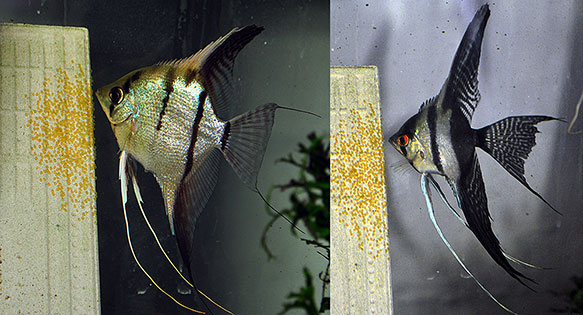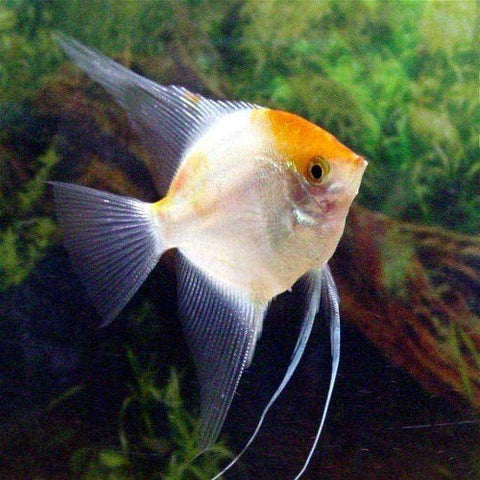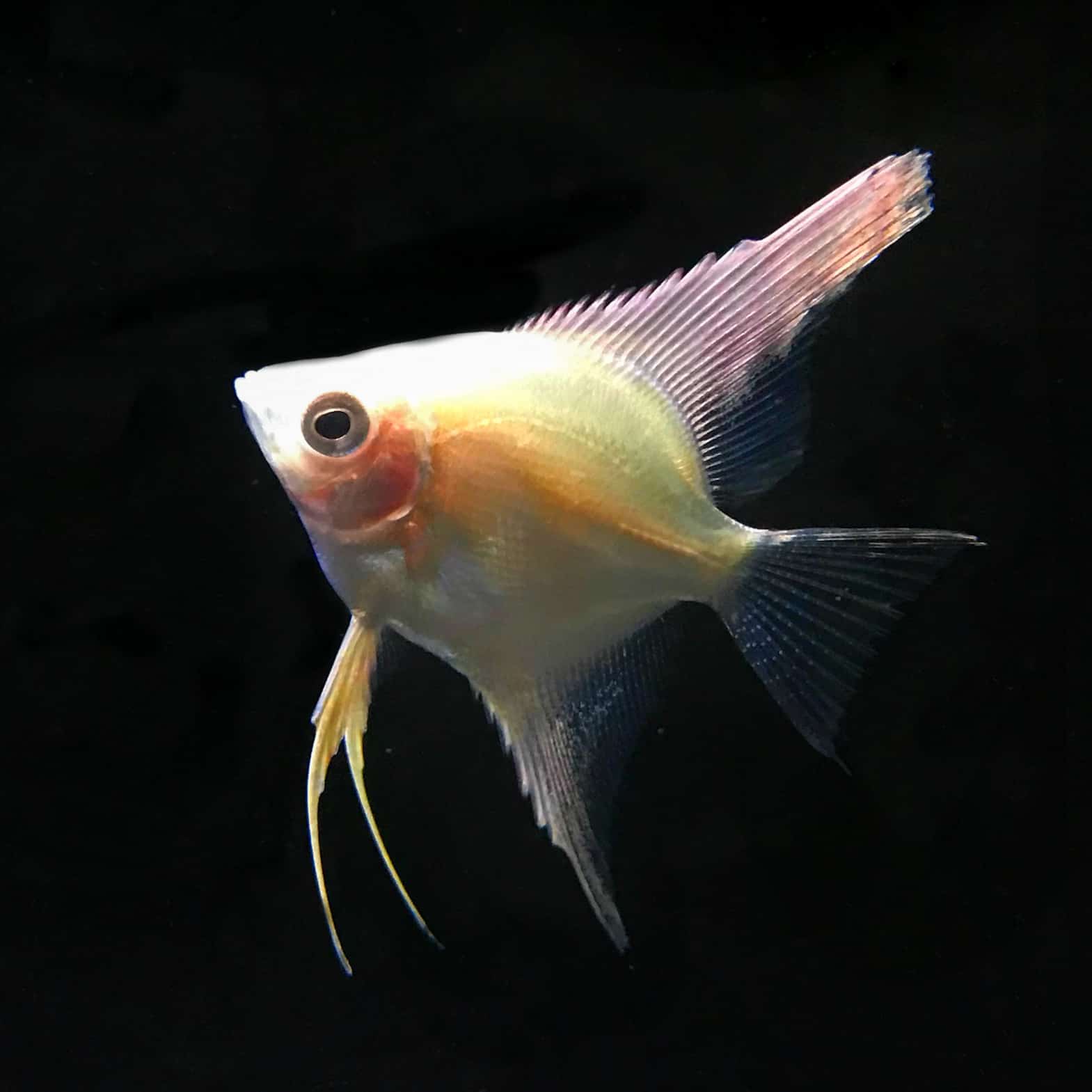
Introduction to Gold Angelfish
Physical characteristics of Gold Angelfish
Gold Angelfish are known for their striking appearance, featuring a bright golden-yellow body with shimmering scales. They have elongated triangular fins that add to their beauty. These fish can grow up to 6 inches in length and have a graceful swimming motion due to their smooth, streamlined bodies.Natural habitat and behavior of Gold Angelfish
Gold Angelfish are native to the Amazon River basin in South America. They prefer slow-moving streams and rivers with dense vegetation. These fish are peaceful by nature and often form small schools in their natural habitat. Gold Angelfish are known to be omnivores, feeding on a diet of small insects, plants, and algae.Tank Setup for Gold Angelfish
Ideal tank size for Gold Angelfish
Previous text:
Gold Angelfish are known for their striking appearance, featuring a bright golden-yellow body with shimmering scales. They have elongated triangular fins that add to their beauty. These fish can grow up to 6 inches in length and have a graceful swimming motion due to their smooth, streamlined bodies.
Updated text:
The Gold Angelfish showcases a vibrant golden-yellow body with shimmering scales and elongated triangular fins. It can reach sizes of up to 6 inches, displaying graceful swimming motions with its streamlined physique.
Water parameters and tank decorations
Previous text:Gold Angelfish are native to the Amazon River basin in South America. They prefer slow-moving streams and rivers with dense vegetation. These fish are peaceful by nature and often form small schools in their natural habitat. Gold Angelfish are known to be omnivores, feeding on a diet of small insects, plants, and algae.
Updated text:Originating from the Amazon River basin, the Gold Angelfish thrives in slow-moving streams with lush vegetation. Peaceful in demeanor, they tend to congregate in small schools. As omnivores, their diet consists of small insects, plants, and algae.

Feeding Gold Angelfish
Dietary requirements of Gold Angelfish
The Gold Angelfish, native to the Amazon River basin, thrives on a diet comprising small insects, plants, and algae. As omnivores, these vibrant fish require a balanced mix of protein and vegetation to maintain optimal health.
Feeding schedule and tips
Feeding should be done twice daily, offering a variety of foods like flake, pellets, and frozen options. Ensure to provide a balanced diet to support their vibrant colors and overall well-being. Avoid overfeeding to prevent water quality issues in the tank.

Breeding Gold Angelfish
Key considerations for breeding Gold Angelfish
The breeding of Gold Angelfish requires a separate breeding tank with suitable water conditions and hiding spots. Ensure pairing compatible mates to improve breeding success.
Breeding process and caring for fry
Once breeding occurs, the male and female will clean a flat surface for eggs deposition. Eggs hatch within 48 hours, and fry should be fed with infusoria and baby brine shrimp for healthy growth.

Common Diseases in Gold Angelfish
Signs of common diseases in Gold Angelfish
Gold Angelfish are susceptible to diseases like ich, fin rot, and velvet. Signs include white spots, frayed fins, and a gold dust-like appearance on the skin. These symptoms indicate possible infections that need prompt attention to prevent spreading.
Treatment options and preventive measures
Treatment involves using aquarium salt, medicated food, or commercial treatments as per the specific disease. Regular water changes, quarantining new fish, and maintaining clean conditions can prevent disease outbreaks. Proper diet and stress-free environments also aid in disease prevention.

Tank Mates for Gold Angelfish
Compatible fish species with Gold Angelfish
Gold Angelfish can thrive with peaceful tank mates like Corydoras, Plecos, and Tetras. Avoid aggressive or nippy fish that may stress the angelfish. Providing hiding spots and spaces with tall plants can help create a harmonious tank environment.
Avoiding aggression and territorial issues
Monitor fish behavior and intervene if aggression arises. Adequate space and enrichment can prevent territorial conflicts among tank inhabitants. Regular feeding and observation will ensure a peaceful community tank environment.

Gold Angelfish Varieties
Different color variations of Gold Angelfish
Gold Angelfish can be found in various color variations such as black lace, marble, silver, and koi. Each variety exhibits unique patterns and hues, adding diversity to aquariums.
Unique traits of various Gold Angelfish strains
Strains like the veil tail, blushing, and zebra display distinct features like elongated fins, iridescent scales, and bold stripes. These traits contribute to the charm and appeal of Gold Angelfish in captivity.

